Refine search
Actions for selected content:
120 results
Chapter 2 - Trinitarian Metaphysics in the Confessions
-
-
- Book:
- Augustine's ‘Confessions'
- Published online:
- 16 December 2025
- Print publication:
- 22 January 2026, pp 25-45
-
- Chapter
- Export citation
7 - The Trinity
- from Part II - Theological Themes
-
-
- Book:
- The Origins of Scholasticism
- Published online:
- 18 November 2025
- Print publication:
- 08 January 2026, pp 208-236
-
- Chapter
- Export citation
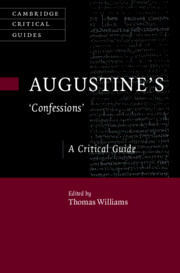
Augustine's ‘Confessions'
- A Critical Guide
-
- Published online:
- 16 December 2025
- Print publication:
- 22 January 2026

The Origins of Scholasticism
- Theology and Philosophy in Paris, 1150–1250
-
- Published online:
- 18 November 2025
- Print publication:
- 08 January 2026
7 - Case Studies in Rationality
-
- Book:
- The Narrative Conflict of Traditions in the Late Antique World
- Published online:
- 22 September 2025
- Print publication:
- 09 October 2025, pp 230-262
-
- Chapter
- Export citation
4 - Narrative Structure of Against Julian
-
- Book:
- The Narrative Conflict of Traditions in the Late Antique World
- Published online:
- 22 September 2025
- Print publication:
- 09 October 2025, pp 119-157
-
- Chapter
- Export citation

The Cambridge Companion to Christian Liturgy
-
- Published online:
- 19 September 2025
- Print publication:
- 09 October 2025
4 - Dubia, Part 1
- from Part II - Difficulties and Resolutions
-
- Book:
- The Humanity of Christ as Instrument of Salvation
- Published online:
- 21 August 2025
- Print publication:
- 04 September 2025, pp 123-150
-
- Chapter
- Export citation
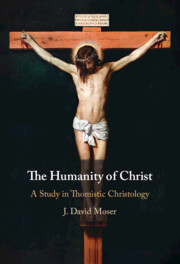
The Humanity of Christ as Instrument of Salvation
- A Study in Thomistic Christology
-
- Published online:
- 21 August 2025
- Print publication:
- 04 September 2025
10 - Preaching on the Trinity
- from Part III - Augustine’s Preaching Themes
-
-
- Book:
- The Cambridge Companion to Augustine's Sermons
- Published online:
- 26 May 2025
- Print publication:
- 12 June 2025, pp 193-208
-
- Chapter
- Export citation
7 - Sermons for Lent, Good Friday, and Easter
- from Part II - Augustine’s Sermons on the Scriptures and Liturgical Feasts
-
-
- Book:
- The Cambridge Companion to Augustine's Sermons
- Published online:
- 26 May 2025
- Print publication:
- 12 June 2025, pp 133-151
-
- Chapter
- Export citation
5 - Sermons on the New Testament
- from Part II - Augustine’s Sermons on the Scriptures and Liturgical Feasts
-
-
- Book:
- The Cambridge Companion to Augustine's Sermons
- Published online:
- 26 May 2025
- Print publication:
- 12 June 2025, pp 98-115
-
- Chapter
- Export citation
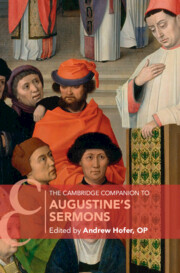
The Cambridge Companion to Augustine's Sermons
-
- Published online:
- 26 May 2025
- Print publication:
- 12 June 2025
A Problem for all Humanity: Nagasaki Writer Hayashi Kyoko Probes the Dangers of Nuclear Energy
-
- Journal:
- Asia-Pacific Journal / Volume 9 / Issue 47 / November 2011
- Published online by Cambridge University Press:
- 07 May 2025, e4
-
- Article
-
- You have access
- Open access
- Export citation
1 - Augustinianisms and Liberalisms
-
- Book:
- Political Theology and the Conflicts of Democracy
- Published online:
- 21 March 2025
- Print publication:
- 03 April 2025, pp 35-94
-
- Chapter
- Export citation
Towards a grammar of theocentric belonging: Kilby, Tanner and beyond
-
- Journal:
- Scottish Journal of Theology / Volume 78 / Issue 3 / August 2025
- Published online by Cambridge University Press:
- 06 March 2025, pp. 229-239
- Print publication:
- August 2025
-
- Article
- Export citation
1 - An Incarnational Theology
- from Part I - The Story of God
-
- Book:
- Constructing an Incarnational Theology
- Published online:
- 09 January 2025
- Print publication:
- 23 January 2025, pp 9-23
-
- Chapter
- Export citation
7 - God
- from Part III - Reconfiguring the Story
-
- Book:
- Constructing an Incarnational Theology
- Published online:
- 09 January 2025
- Print publication:
- 23 January 2025, pp 167-187
-
- Chapter
- Export citation
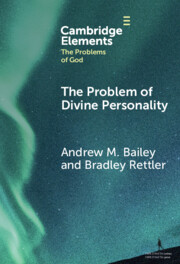
The Problem of Divine Personality
-
- Published online:
- 13 December 2024
- Print publication:
- 30 January 2025
-
- Element
- Export citation
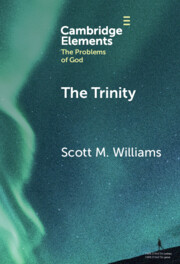
The Trinity
-
- Published online:
- 09 December 2024
- Print publication:
- 16 January 2025
-
- Element
- Export citation
